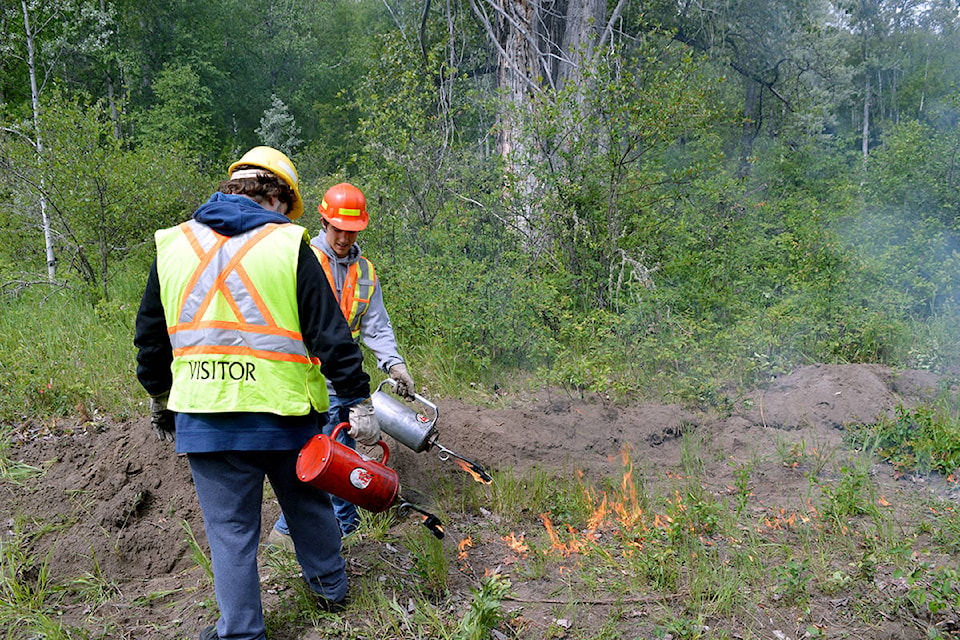Students from Correlieu Secondary School donned fluorescent vests and hard hats as they joined forestry professionals and summer students, forest firefighters, a biologist, an archaeologist and the B.C. Council of Forest Industries (COFI) for a hands-on introduction to careers in natural resource management on a Tuesday afternoon (June 5).
The event, hosted by COFI and West Fraser Mills in Quesnel, is part of a wider project to encourage local students to consider careers in the forest industry.
COFI expects 50 per cent of the skilled workforce in the forest industry will retire in the next 10 years. This means they’ll have approximately 25,000 open positions to be filled across the province over the next decade.
Jim Costley is COFI’s manager of forest education for Northern B.C. He says there are two reasons they host these events. One is to attract young people to the forest industry, while the second is to show them what it’s really like to work in those jobs.
“Kids often don’t know what goes on in the forest industry,” says Costley. “We cut the tree, they see a logger, they see a truck come in and they see a mill make two-by-fours.” But, he says, there’s a lot more to the forest industry, and that’s what he hopes to show the students who come out to these events.
Correlieu sent 30 students to the event held at Beavermouth Recreation Site off Quesnel Hydraulic Road, where they cycled through a series of workshops.
The workshops included timber cruising, where the students were able to practise using tools of forest measurement; archaeology, where the students walked through the forest looking for evidence of people who’d been there before and examined obsidian shards; fish management, where the students pulled on hip waders and went into the Quesnel River with a biologist to catch and release fish to practise classifying the river as “fish bearing”; forest fire fighting, where the students built fireguards and did controlled burns; and silviculture, where students practised using a drone, something silviculturists use to map out problem areas in plantations as well as monitor forest health. The students spent an hour at each station.
They gathered attentively around the workshop leaders, playing rock, paper, scissors to decide who would get to measure a tree or take the drone for a spin.
Sheryl MacFarlane, who teaches career prep at Correlieu, says it’s her second year coming on the field trip. She says the students not only get to experience the day-to-day life of someone working in the forest industry, but they also learn what education is required to do that kind of work.
“I know students that are [working] in forestry because of this trip,” says MacFarlane.
“They learned so much and they got excited about it, seeing, ‘Hey, this is a career that I could get into.’”
MacFarlane’s own son was one of those students. “This was the trip that changed his mind” about what he wanted to do, says MacFarlane. Now, her son works as a forester in Prince George.
For the most part, the students on the trip were there because they’d expressed past interest or curiosity in a career in the forest industry.
Braden Goyette, an Grade 11 student at Correlieu, says he came on the trip because he wants to be a conservation officer.
“This might be able to help me, like with the fishery [workshop], maybe give me an idea of what a conservation officer might do.”
Goyette says he particularly enjoyed the fire fighting station. “And next year, I’m going to be doing their junior program, which is going to be awesome,” adds Goyette.
heather.norman@quesnelobserver.com
Like us on Facebook
